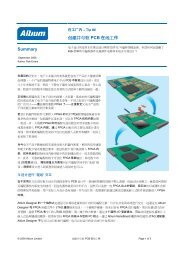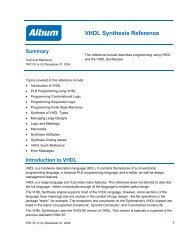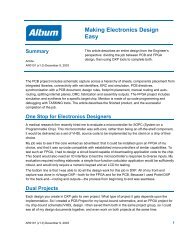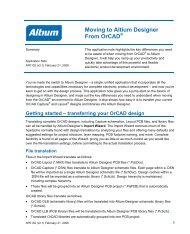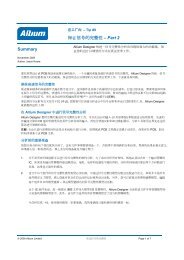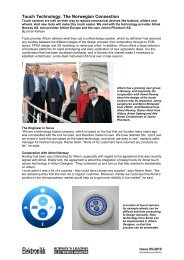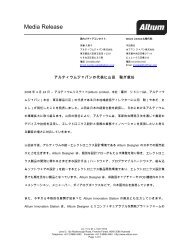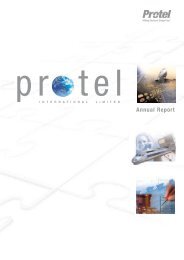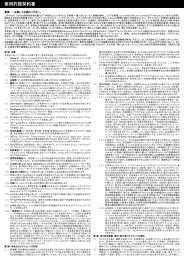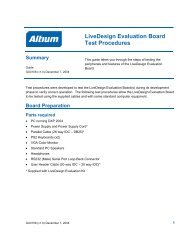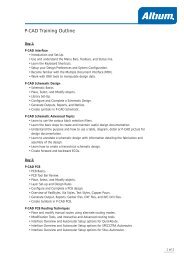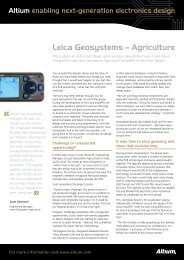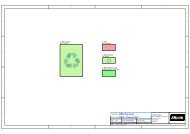TASKING C166 ELF-DWARF APPLICATION BINARY INTERFACE
TASKING C166 ELF-DWARF APPLICATION BINARY INTERFACE
TASKING C166 ELF-DWARF APPLICATION BINARY INTERFACE
Create successful ePaper yourself
Turn your PDF publications into a flip-book with our unique Google optimized e-Paper software.
<strong>TASKING</strong> <strong>C166</strong><br />
<strong>ELF</strong>-<strong>DWARF</strong> <strong>APPLICATION</strong> <strong>BINARY</strong> <strong>INTERFACE</strong><br />
Consider the following example, where similar code from foo1() and foo2()<br />
has been extracted into a coco function.<br />
0x100 .cocofun1: mov ... ; lines 11 and 21<br />
0x102 rets<br />
0x200 foo1: mov ... ; line 10<br />
0x202 calls .cocofun1 ; line 11<br />
0x204 mov ... ; line 12<br />
0x206 rets<br />
0x300 foo2: mov ... ; line 20<br />
0x302 calls .cocofun1 ; line 21<br />
0x304 mov ... ; line 22<br />
0x306 rets<br />
If the target halts at 0x100, the debugger determines (via the name) that<br />
this lies within a coco function and that, according to the line info, this<br />
could represent both source lines 11 and 21. It should then perform a<br />
stack trace, which indicates that the return address at top-of-stack is, say,<br />
0x304. From the line information in that vicinity (20-22) it can conclude<br />
that, in this case, address 0x100 probably means line 21, not 11.<br />
Note that other optimizations may lead to instruction re-ordering within<br />
foo2(). Therefore, it is recommended to not just check the return site<br />
(0x304), but also a few bytes before and after that.<br />
3.3 Execution control<br />
Taking into account coco requires only a few changes in the debugger<br />
regarding source-level stepping, as long as the "disambiguated" line<br />
number is determined correctly. Note, however, that when the next<br />
instruction is a call and the user does a "step over", it needs to be checked<br />
whether the callee is a coco function. If so, semantically that is the same<br />
function, so at instruction level a step into should be done then.<br />
3.4 Variable access<br />
When a coco function is generated, this may involve the parent functions'<br />
local variables. In the debug information, the TAG_subprogram associated<br />
with a coco function itself will not enclose TAG_variables then, however;<br />
they remain associated with the TAG_subprograms of their respective<br />
parents, among other reasons because otherwise their (semantic) scope<br />
would not be represented properly.<br />
119-EDABI 1.4 Released page 18 of 19 2008-09-04



